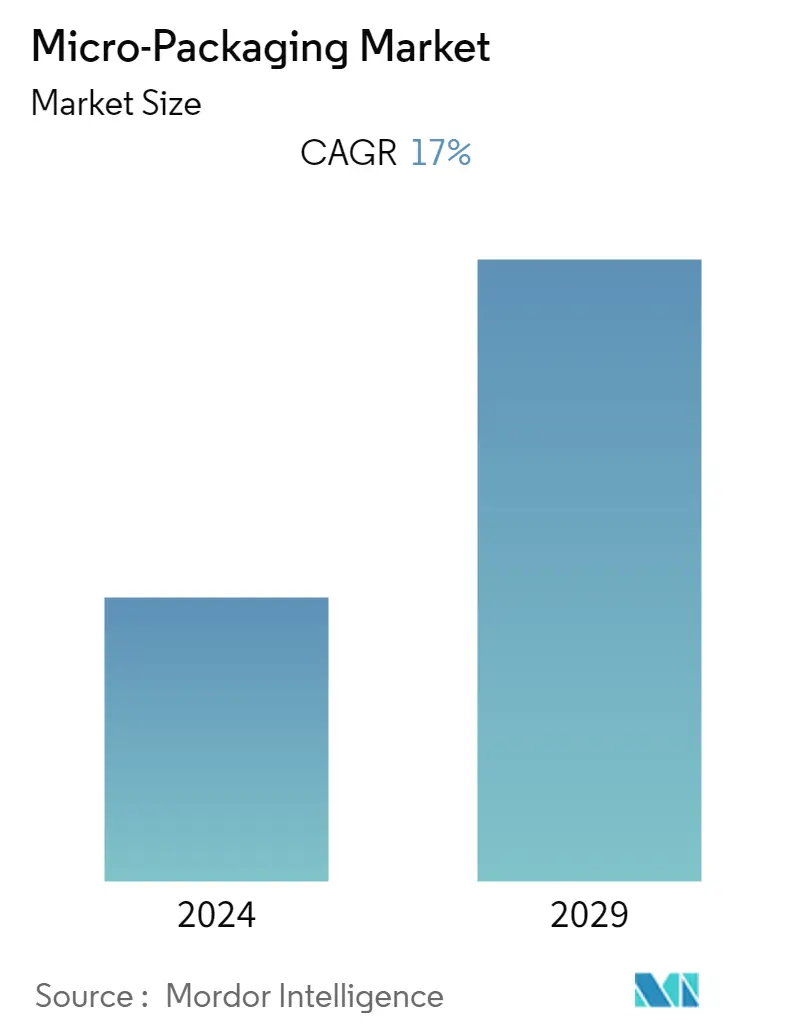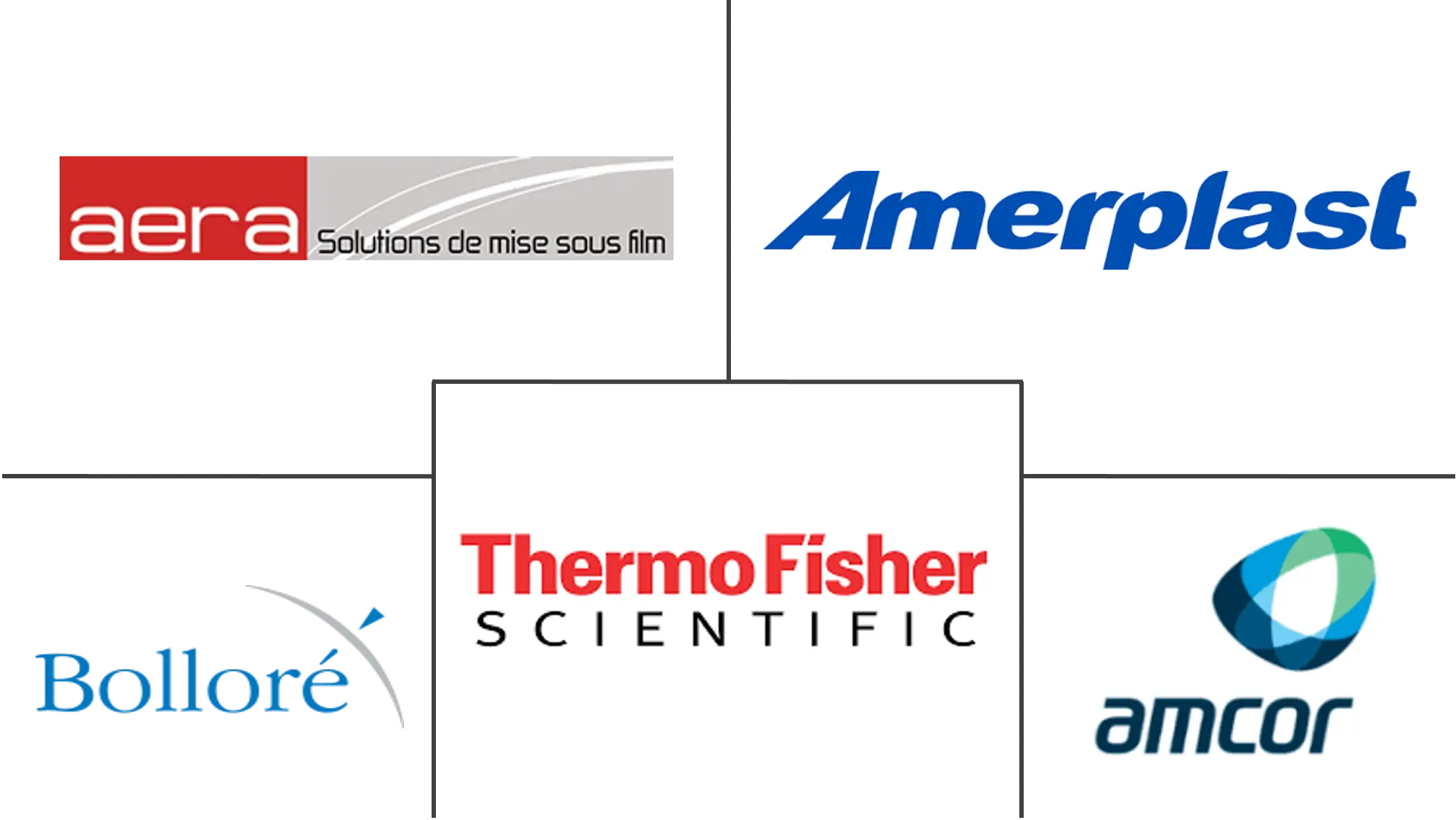Market Size of Micro-Packaging Industry

| Study Period | 2019 - 2029 |
| Base Year For Estimation | 2023 |
| CAGR | 17.00 % |
| Fastest Growing Market | Asia Pacific |
| Largest Market | North America |
| Market Concentration | Medium |
Major Players
*Disclaimer: Major Players sorted in no particular order |
Need a report that reflects how COVID-19 has impacted this market and its growth?
Micro-Packaging Market Analysis
The micro packaging market is expected to grow at a CAGR of 17% over the forecast period (2021-2026). With the current study of plastic packaging, manufacturers are exploring alternatives such as plant-based fibers. An example is micro fibrillated cellulose (MFC) where plant fiber breaks down to micro levels and is reconstituted as packaging material. The process can create materials that are stronger and lighter than those made of glass or carbon fibers, and MFC can be added to other packaging materials to strengthen them. With the implementation in the future, this packaging technique can provide a new trend in the market.
- Micro-perforated food packaging is specifically used for perishable food products, aiming to extend shelf life and improve the moisture retention of the products. According to the Food and Agriculture Organization of the United Nations, in the United States, the production quantity for vegetables in 2018 increases to 807349 tonnes from 709033 tonnes in 2017. With the increasing consumption the growth for micro packaging increases. Also, scientists are focusing to enhance the functional properties of films for active food packaging. For instance, in Aug 2019, scientists from the Department of Process Engineering, Stellenbosch University, South Africa aims to form Acetylated hemicellulose films that are suitable for fatty foods packaging using acetylated nano-cellulose reinforcement and polycaprolactone coating.
- Also in Dec 2019, from the Department of Food and Nutrition, BioNanocomposite Research Center, Korea, scientists experimented with a synthesis of Fe3O4/SiO2/PAMAM dendrimer/AgNP hybrid nanoparticles for the preparation of carrageenan-based functional nanocomposite film which exhibits high UV-barrier property and clear antibacterial activity against foodborne pathogenic bacteria.
- The origin of new drug delivery systems and the development of new biochemical compounds drive the market. The burden of chronic diseases is rapidly increasing worldwide and according to WHO, it has been calculated that, in 2001, chronic diseases contributed approximately 60% of the 56.5 million total reported deaths in the world and approximately 46% of the global burden of disease.
- The proportion of the burden of NCDs (Non-communicable disease) is expected to increase to 57% by 2020. Almost half of the total chronic disease deaths are attributable to cardiovascular diseases; obesity and diabetes. These diseases cater a demand for medicine providing micro packaging owing to its ability to enhance stability and shelf life to the drug and the delivery system.
- Leaching of nanoparticles restraints the market to grow. There is an impact on the stability and chemical activity of nanomaterials, as the size and shape of the initial nanoparticles may change dramatically. For antimicrobial activity, a small amount of silver slowly migrate from the inside of the packaging material to the surface and release the silver ions to attack microorganisms. Consequently, AgNPs are probably ingested via food that contacts the packaging surface.

